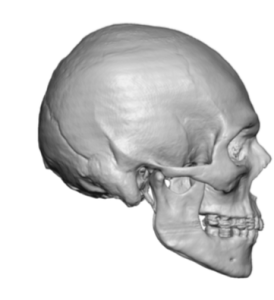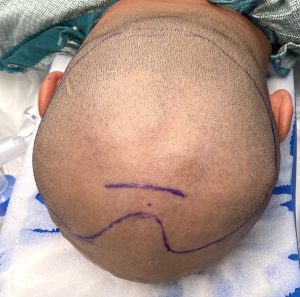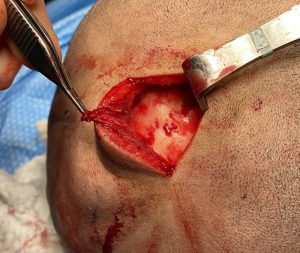Background: The skull is a collection of numerous curved shapes that appear most prominently when viewed from oblique angles of the head. Such head curvatures are particularly seen in the bald or shaved head male. (the latter in particular) One of these head angles or curvatures of the hairless male head is in the oblique view in which the shape of the crown of the head is seen. When the crown area is underdeveloped it can look like a part of the head is missing or cut off. As a result such aesthetic skull deficiencies are a frequent request for augmentation for an improved head shape.
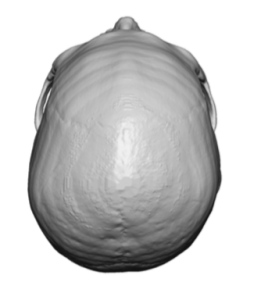
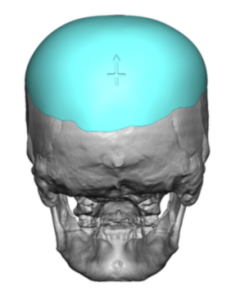
Under general anesthesia and in the prone position a scalp incision was planned at the upper end of the crown area. Once the incisions made tightly adherent scalp tissue could be found tethered down into a small hole in the center of the overall indentation.
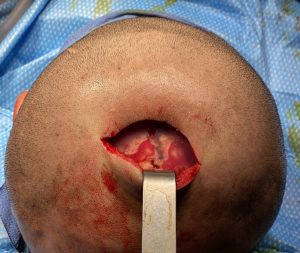

The developmental origin of the crown area is impacted by the original location of the posterior fontanelle, the junction of the sagittal and lambdoid suture lines. While this area is open at birth the cranial bones merge to close this soft spot around 3 months of age. While this soft spot may close how well it fills in with bone or thickens is variable. Incomplete bony fill or failure of the developing brain to adequately push out this skull curvature area accounts for, in my opinion, the not uncommon flat spot at the crown of the head. This hypothesis is supported in this case as evidenced by the residual central bony depression in the crown areas with a tightly adherent band of tissue in its very center.
Case Highlights:
- A common flat or underdeveloped area of the skull is at the crown area.
- Deficient or flat crown areas of the skull are most evident in the oblique view where it looks like a part of the skull is missing.
- A custom skull implant can add to this deficient curve of the skull area and its design must be careful to not be excessive.
Dr. Barry Eppley
World Renowned Plastic Surgeon



